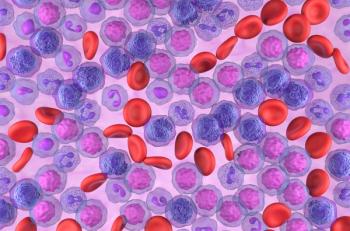
Addressing Systemic Barriers to Dermatologic Consultation in Oncology Care
Adam Friedman, MD, FAAD, discusses systemic barriers to timely dermatologic consultation for patients with cancer.
As oncologic therapies become increasingly effective, the focus of comprehensive cancer care must broaden to include the aggressive management of therapy-related adverse effects (AEs). Dermatologic AEs, ranging from radiation dermatitis to permanent hair loss, significantly affect a patient’s quality of life and adherence to treatment. A key finding from a recent study, "
Friedman, professor and chair of dermatology, director of the Residency Program, and director of translational research at George Washington Medical Faculty Associates in Washington, DC, addressed the key systemic and logistical barriers preventing optimal dermatologic consultation for patients with cancer. Friedman emphasized how these access issues are exacerbated in “dermatology deserts,” citing the geographic and socioeconomic disparities in his own study conducted in Ward 7 and Ward 8 of Washington, DC.
Transcript:
I wasn't surprised by that, and there are a couple of reasons why access to dermatology may not be happening when it absolutely should be, especially in this setting. It also depends on the community and the availability of dermatologists. There is, certainly, a bucket of referrals. Colleagues in support of the dermatology world have published on this before. One of my colleagues, Beth N. McLellan, MD, who’s chief of dermatology at Montefiore Einstein School of Medicine in the Bronx, published a study looking at the referral rates from radiation oncology to dermatology in the setting of radiation dermatitis, and the numbers were quite low. This was many years ago, so hopefully, that’s better [now]…. There’s so much going on in oncology that we have to focus on a bigger picture, and that’s getting rid of the cancer and, hopefully, saving the patient. Sometimes, dermatologic consequences fall by the wayside.
[It is important to] be mindful of the opportunity to refer. Then, on their side, [they must] have somewhere to refer. Access to dermatology is a huge challenge in the US. There are plenty of papers and a lot of evidence supporting that unsettling statement. Knowing even where to send someone and send someone quickly probably fits into that as well.
There are also different socioeconomic and demographic features. Our study specifically took place in Wards 7 and 8 of Washington, DC, which is a dermatology desert. There’s not a single dermatologist in that area, which is why we have created a free dermatology clinic that happens monthly there at a local church in Wards 7 and 8. Cost has to be considered as well.
Reference
Menta N, Vidal SI, Whiting C, Azim SA, Desai S, Friedman A. Perceptions and knowledge of dermatologic side effects of anti-cancer therapies: a pilot survey. J Drugs Dermatol. 2025;24(8):e57-e58.
Newsletter
Stay up to date on recent advances in the multidisciplinary approach to cancer.


















































































